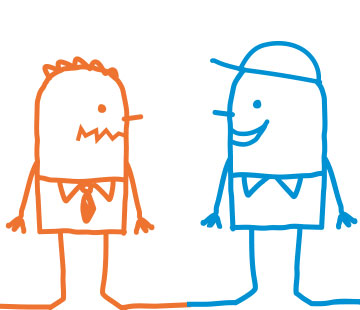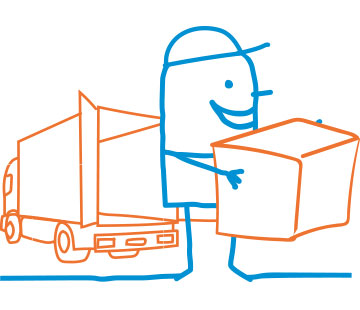
It all began with the information that there is a task to do – preparing several pages of a magazine for the logistics department introducing modifications to its supply chain running model. I thought the task would be easy on the one hand (only a few pages), and I will be able to learn something new on the other hand – I know something about logistics, but my knowledge is rather basic. I was happy to write down the contact number to the person coordinating the project on the client’s part.
That was in the winter:) The project was neither quick nor easy. But it was satisfying and illuminating.

The first conversation revealed the fundamental difficulty – communication and understanding. Each business sector has its own ‘slang’ and you need to be more careful about the choice of words when speaking to someone who’s not in the business. But this time the bar was raised high, because I didn’t cooperate with people from the communication or HR department. My clients were supply chain experts, and they got me on the other side: the ultimate humanist. Our first meeting was mostly about asking what the other party has in mind and making sure you got things right.
My job was to create a kind of a guidebook informing the employees servicing different parts of the supply chain (including drivers of mini vans and lorries) how to react to various issues. What issues? For example, how to avoid falls…

Whoever knows what that means has to have to do with the transport business in Poland. Avoiding falls is simply avoiding a situation when the supply is not delivered due to various obstacles (from road conditions to formal difficulties, e.g. invoicing). I learnt a whole bunch of such expressions in the recent months. I had to ask about the meaning of every one of them, so that I knew what to put in the publication. WHAT to write. HOW to write it. Or what NOT TO WRITE but show with an IMAGE instead.
I decided not to change those specific expressions – whenever I was able to write something “in Polish” I chose generally used language, but I thought effectiveness and a practical attitude are key. If I want the message to get through to the reader, in this case a driver who spends long hours behind the wheel who is permanently under pressure to complete the delivery, I must write it so that he knows instantly what the text is about. I had to use the language he uses at work, not one I would use.
 When I presented the first draft to the client, which in my opinion had very short articles, it turned out there is 70% too much text! I had to alter my way of thinking even more – this wasn’t a project to fight against the image culture. My client asked me to imagine that I have a few minute break and I’m about to jump back into my lorry to move on, and I get a few pages of text to read. I imagined that… and I saw myself roll those pages and put them in the glove compartment.
When I presented the first draft to the client, which in my opinion had very short articles, it turned out there is 70% too much text! I had to alter my way of thinking even more – this wasn’t a project to fight against the image culture. My client asked me to imagine that I have a few minute break and I’m about to jump back into my lorry to move on, and I get a few pages of text to read. I imagined that… and I saw myself roll those pages and put them in the glove compartment.
The publication had to be quick and easy to read. Together with our graphic designer, who played the key role in this project, we ‘translated’ as much text as we could into infographics. We came up with short and precise messages, easy to find and access necessary information and… get going. At some point the client urged to use even more drawings and infographics, but together with the graphic designer we convinced him that if we upset the balance between the text and images, important information will be lost instead of standing out from the text. Clients often believe it is better to use bold colorful font and add an arrow – but the communication effect is poor, and it is our role to explain this to the client in the most sensible way. (Here you can read how we collaborate with other customers.)
While working on this project we were all unusually adept at keeping the balance between the client’s remarks and the suggestions on the side of the agency (regarding editing and graphic design). We were a challenge to each other, but since we understood that we’re all professionalists in our business we were able to cooperate, and the outcome is a great project.
Kategorie: power of contentic, B2C